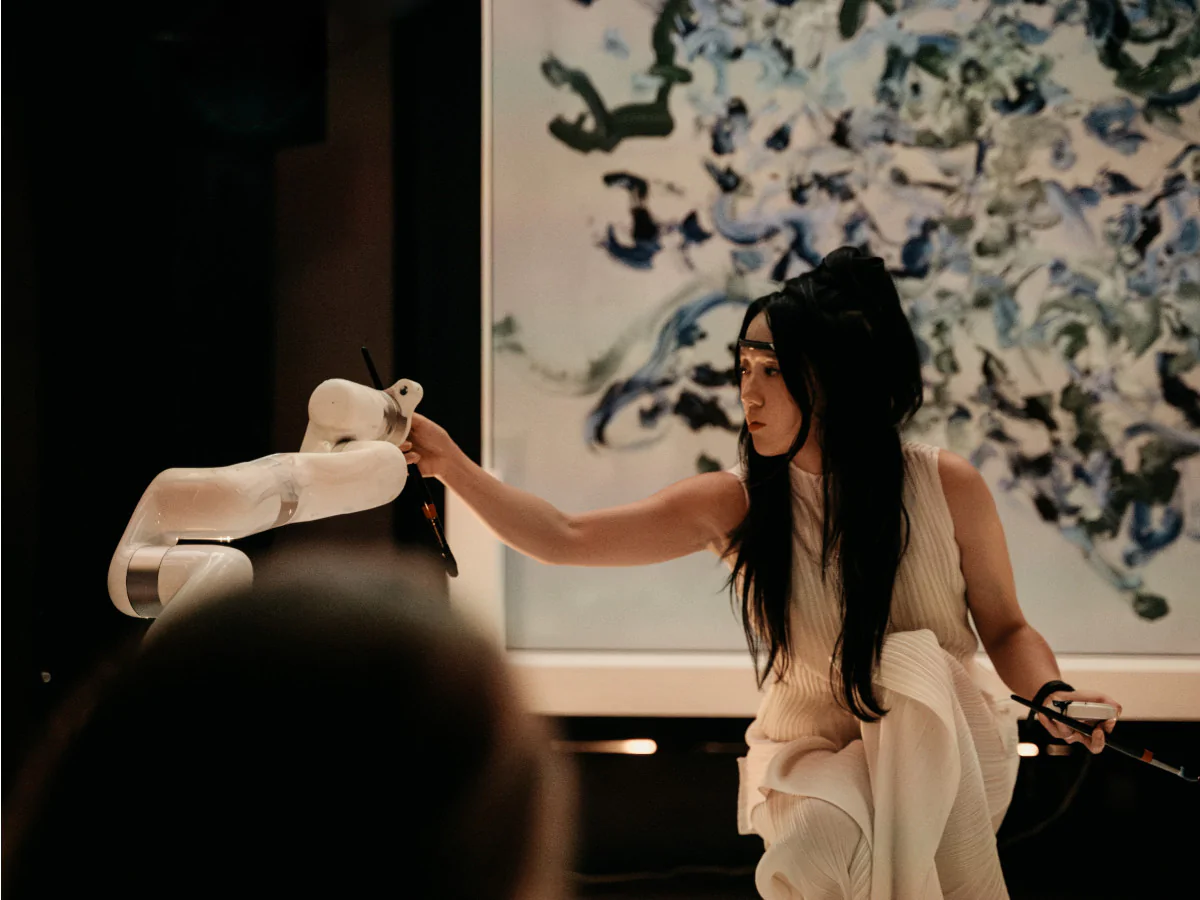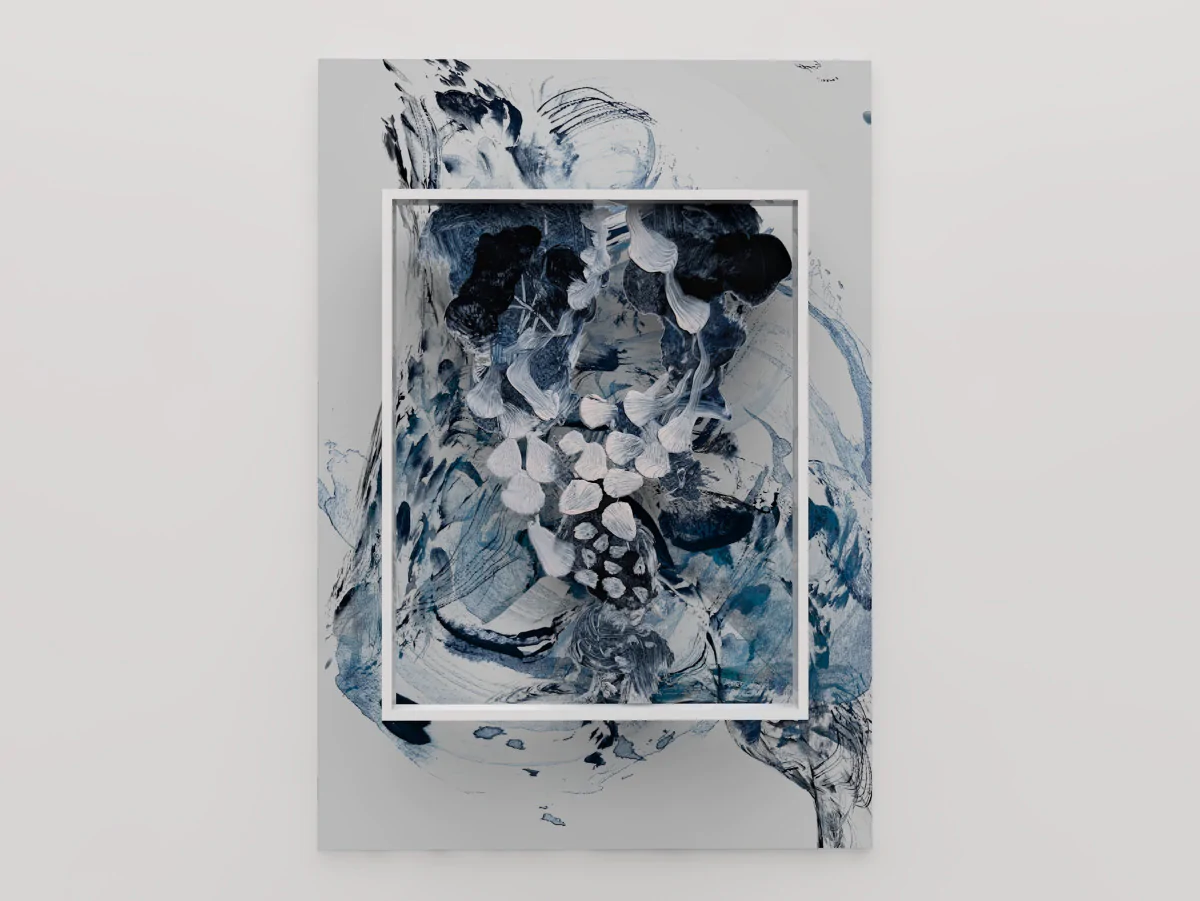How did the process for ‘Genesis II: Body Machine’ come about, and how did it vary compared to past projects like ‘Mutations’ and ‘Assembly Lines’?
This new body of work is in some ways an evolution of Assembly Lines and drawing operations in that so much of what I've been interested in over the past decade has been the evolution of the human hand. There are so many ways that we can reinvigorate traditions of drawing and processes of choreography through working with, and re-designing our tools.
For Genesis II, I developed a new spatial dataset, a meridian dataset that explores the 3D spatial line — it’s like sculpting in air. There’s a lot of technical challenges to this but I feel like it could inform the next generation of human and machine collaboration. What I've specifically been working with is ways to extend human gesture and body movements through virtual reality tools and motion capture. Essentially, I wear a motion capture suit that tracks the minutiae of my body movement. So it's sort of like recording the positional data of a dance, except in this case, I'm creating these sculptures in air.
From a drawing standpoint, we’re now able to draw in a way we’ve never been able to before — recording data for machine interpretation and conversation. From an engineering standpoint, as well as an artistic adaptation standpoint, it’s a really interesting process.






